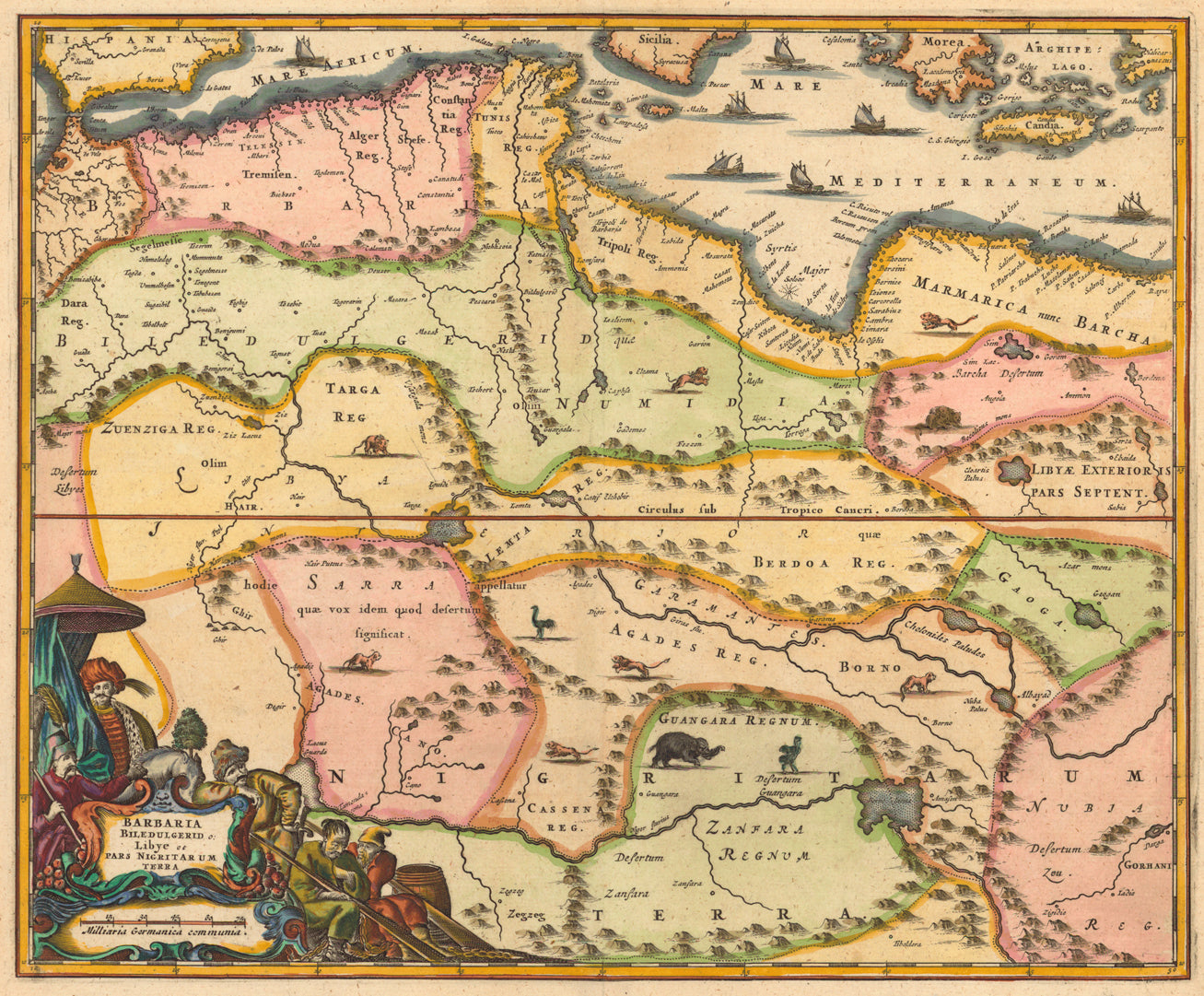
Little is known about the life of Berber Queen Dihya outside of her conflict with the Muslim Arab leader Hasan ibn al Nu'man whose Umayyad armies campaigned across North Africa. She was born in the early 7th century A.D. and died around the end of the 7th century in modern-day Algeria.
Her birth name was Dihya, or some variant thereof (“the beautiful gazelle” in the Tamazight language of the Imazighen). “Kahina” is an Arabic title meaning “prophetess,” a nickname given to by her Muslim opponents because of her alleged ability to foresee the future.
Her perceived spiritual power has led to comparisons with the French heroine Joan of Arc and Native American Apache seer and female warrior Lozen.
Queen Dihya is generally held to have been a Jewess, but could have followed to old Carthaginian religion, which differs from Judaism but shares some similarities. There are many Black Jews in parts of Africa such as the Falasha of Ethiopia and Lemba of South Africa.
She is noted in Muslim texts as the ruler of southeast Algeria, said to be part of a small tribe of Berbers, the Jeraw. Muslim sources describe her as having dark skin with lots of hair, which is usually interpreted to mean she wore her hair long and bunched in dreadlocks. She is usually depicted in the attire of the royalty of ancient Numidia: a loose-fitting tunic or robe worn with sandals and sometimes belted, and huge eyes.
[Numidia flourished between 202-40 B.C. It is considered the first Imazighen state established in North Africa and was founded by King Masinissa (202-148 B.C) following the Second Punic War between Rome and Carthage].
Queen Dihya succeeded the defeated General Kusaila, as the war leader of the Berber tribes (c. 680 A.D.).
The Umayyad caliph, Abd al-Malik appointed Hassan ibn al-Numan as the new governor and commander of the caliphate on the North African front. The Umayyad caliphate, was the second empire established after the death of the Islamic prophet Muhammad. Hassan ibn al-Numan was given the revenues of Egypt in their entirety to raise and equip a large army to permanently conquer North Africa.
Under her leadership, Africans fought back and drove the Arab army northward into Tripolitania. When the Arab general, Hasan ibn al Nu'man captured Carthage (c. 698), his victory proved to be short-lived. Queen Kahina soon rallied her forces and drove him from the city. She defeated Hasan so soundly that he fled and holed up in Cyrenaica (Libya) for four or five years.
When the Muslim empire became stronger, the Arabs invaded again, and this time, the Berber army was unable to defend themselves. A significant number of her former allies fought against her. Commanding a greatly diminished force against overwhelming numbers, Kahina was defeated. She either died in battle, took poison to avoid capture, or was taken and later executed.
Most historians believe that she began a scorched earth campaign to destroy anything in her empire that might be of use to an advancing enemy. The campaign had little impact on the mountain and desert tribes, but devastated her tribesmen who lived in the vulnerable oases. In destroying some of the villages and strongholds within her kingdom, she turned her own people against her.
The other possible narrative is that Arab historians are attributing to Queen Dihya a tactic known to have been used by invading Arab armies elsewhere.
Sources differ on whether the Arab general who defeated Queen Dihya was Hasan or Musa bin Nusayr (died c. 716 CE). Musa replaced Hasan as governor in North Africa but it is unclear when.
Queen Dihya had three sons, two were her own and the third was adopted. Throughout history, Arabs, Berbers, Muslims, Jews, and French colonial writers, rewrote the accounts of her life, and, in the process, voiced their own vision of North Africa’s history.
Like this post? Stop by and read ”Anne Frank: Her Life & Diary (Het Achterhuis).” Anne Frank was born Annaliese Marie Frank in Frankfurt, Germany. Her original red and white checkered diary was a birthday gift. Her family was sent to Auschwitz in 1944, the last shipment of Jews to leave Holland. She would die from typhus at the Bergen-Belsen concentration camp before turning 16, two weeks before the camp was liberated and two months before the war ended.
I'd love to have you as a customer, head to the online store and shop for handcrafted beaded jewelry by beYOUteous.
Leave a comment